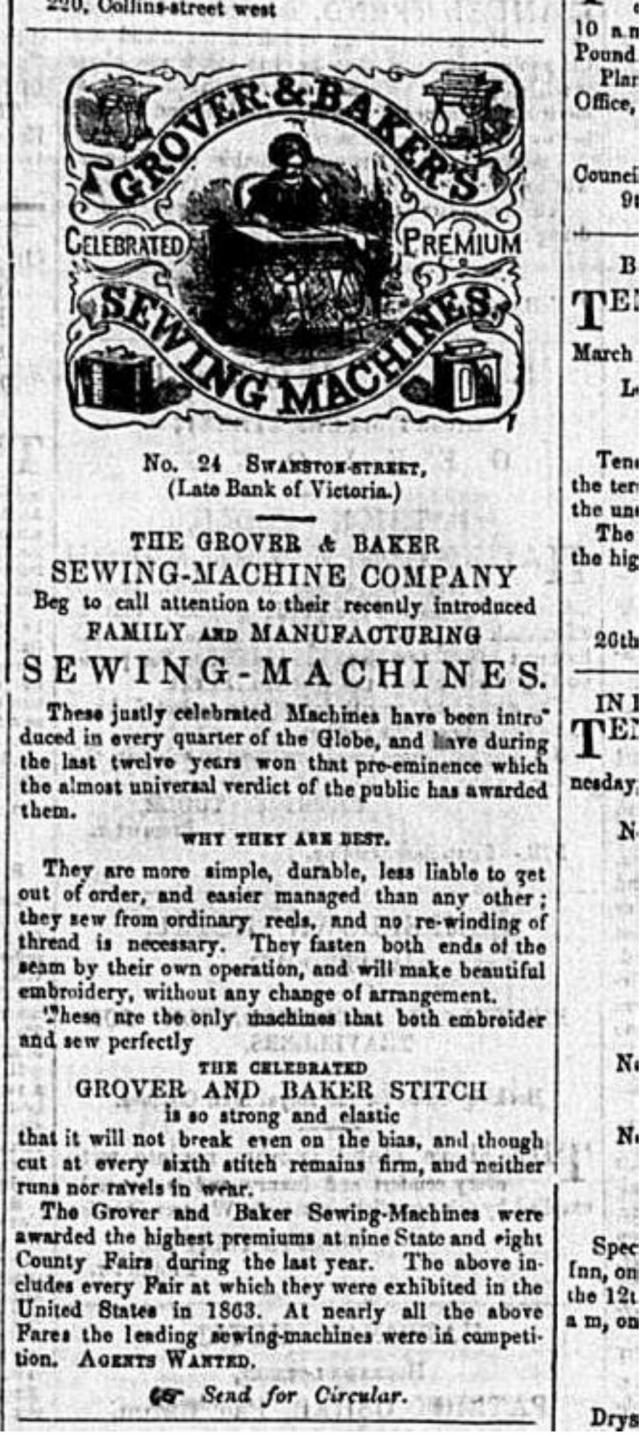160 YEARS AGO IN GEELONG
(From the pages of the Geelong Chronicle)
SEWING MACHINES
In 1863, a relatively new invention was changing how clothes were made and how women lived and worked. The invention of the ‘modern’ sewing machine in the 1850s meant that clothes started to be mass-produced (and were, therefore, cheaper and more widely available). In the home, women could now make the family’s clothes; in the workshop or factory, women could earn money to supplement the family income.
There were two major sewing machine brands available in Geelong.
Wheeler and Wilson, an American firm, advertised its lock-stitch sewing machine as “superior to all others”. It boasted that the sewing machine had won a gold medal at the Paris Exhibition in 1861 and another the following year at the Great Exhibition in London.
The advertisement went on to say that the machines work equally well on silk, cotton, woollen and linen goods, beading, binding, cording, hemming, tucking, seaming and gathering. The selling agent was S. Cole and Co., Bourke Street, Melbourne.
The alternative offered in Geelong was Grover and Baker’s ‘celebrated premium sewing machine’. Also made by an American firm, Grover and Baker, its machines were (self) described as the best. ‘They are more simple, durable and less likely to get out of order’.
The local agents for the machines were Messrs Heath and Cordell, of Malop Street, Geelong.
Mrs Fisher, a dressmaker, of Candover Street, Ashby, advertised ‘every description of ladies material, children’s dresses, knicker-bocker suits, Crimean shirts, underclothing etc, made by the sewing machine’.
She seems to have had more than one machine. At first she advertised for tackers to tack the cloth in position before the pieces were stitched together with the sewing machines. The following month she advertised for apprentice sewing machinists. It was clear she had a good business going in 1863.
And, as the saying goes, success breeds success. Mr J. B. Holdsworth, calling himself a ‘practical machinist’, of Little Malop Street, advertised that he could adjust and repair every type of sewing machine. Orders from the country would be ‘punctually attended to’.
This article was provided by the Geelong Historical Society. For enquiries, email admin@geelonghistoricalsociety.org.au or write C/- P.O. Box 7129, Geelong West, 3218.







